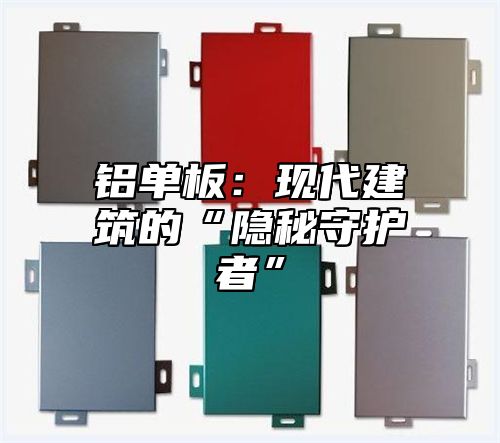

 Industry information
Industry information
Friends, today let's talk about aluminum veneer, which is the low-key "guardian" in modern architecture!
Let's talk about the origin of aluminum veneer. This product is actually a sheet made of aluminum or aluminum alloy, with a variety of surface treatments, from simple spraying to complex imitation wood grain and stone grain, which is simply a matter of aesthetics. But don't just look at its beautiful appearance, its inner strength should not be underestimated.
I remember once I visited a newly built office building, and the exterior walls of the building were made of aluminum veneer. Standing downstairs, I can clearly see that each board is tightly fitted without any gaps. This reminds me of a saying I saw on my social media before: "Aluminum veneer is the 'invisible warrior' of the construction industry." Well, I think it's quite appropriate.
There are many benefits to aluminum veneer, the first of which is its lightweight. Compared to traditional building materials such as stone and glass, aluminum veneer is much lighter in weight, which reduces the load-bearing capacity of the building. I remember once chatting with an architect who said, "Using aluminum veneer for exterior walls not only reduces construction costs, but also makes buildings more environmentally friendly
Next is weather resistance. Aluminum veneer has strong adaptability to the environment, whether it is exposed to wind and rain or sun and rain, it can stand firmly there. This reminds me of myself. Although I am under a lot of work pressure, I also hope to be able to maintain my true colors like aluminum veneer, no matter how the external environment changes.
Aluminum veneer is not perfect either. It is relatively easy to scratch, and once the surface is damaged, it is more difficult to repair. Also, if installed improperly, it is prone to water leakage problems. When choosing aluminum veneer, it is important to find a professional construction team.
Returning to the title of "hidden guardian" of aluminum veneer. Aluminum veneer plays an important role in many public buildings and commercial complexes. Most of the exterior walls of our common subways, airports, train stations, etc. are made of aluminum veneer. People come and go in these places, exposed to wind and rain. Without the protection of aluminum panels, buildings cannot withstand such tests.
Let's talk about the application of aluminum veneer in personal life. My newly renovated house uses aluminum veneer for its exterior walls. That day, I stood on the balcony, watching the building shimmer in the sunlight, and suddenly felt that this house was like my "warship", and I was the captain of that warship. Aluminum veneer, like the armor of a warrior, silently guards my home.
Speaking of which, I remembered a little story. Once, I visited a construction site and saw a worker installing aluminum veneers. While he was working, he chatted with me and said, "Although this aluminum veneer looks simple, it actually requires a lot of knowledge. We need to ensure that each board is installed flat, firmly, and without any gaps. This is the 'face' of a building, and we cannot be careless
This statement gave me a deeper understanding of aluminum veneer. It may not have the luxury of marble or the transparency of glass, but it silently shoulders the responsibility of guarding the building. This reminds me of myself, although I am not a construction worker, I am silently contributing to the company and my family in my own job position.
Aluminum veneer, the "hidden guardian" of modern architecture, although low-key, is indispensable. It uses its unique charm to interpret the aesthetics of architecture and safeguard the prosperity of the city. Perhaps one day in the future, you will see a building whose exterior walls are made of aluminum panels, and that building will be your 'guardian'.